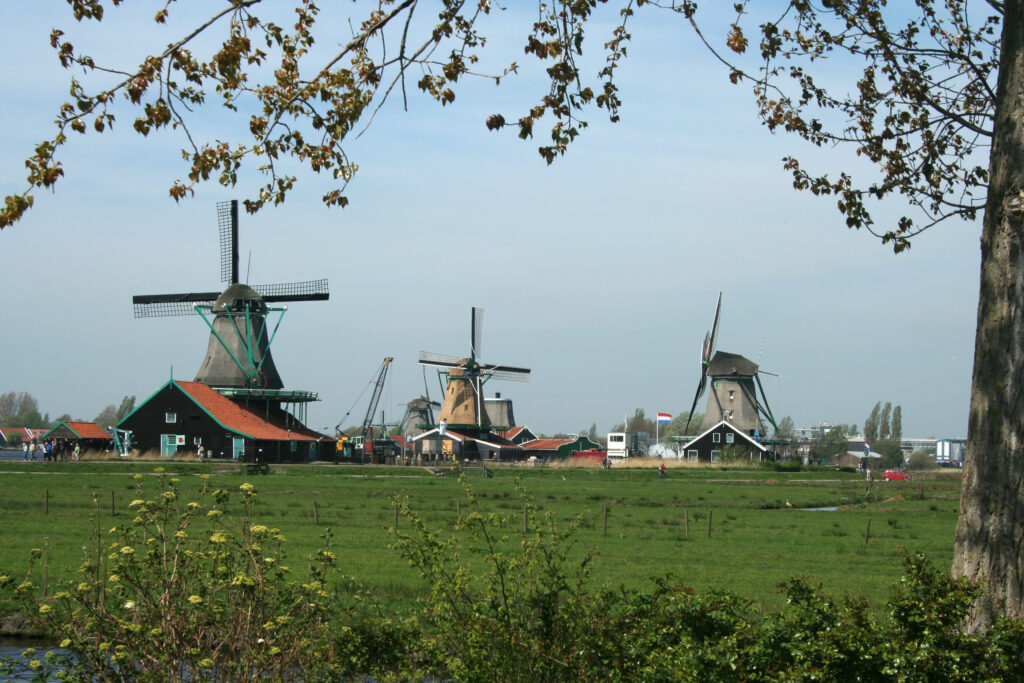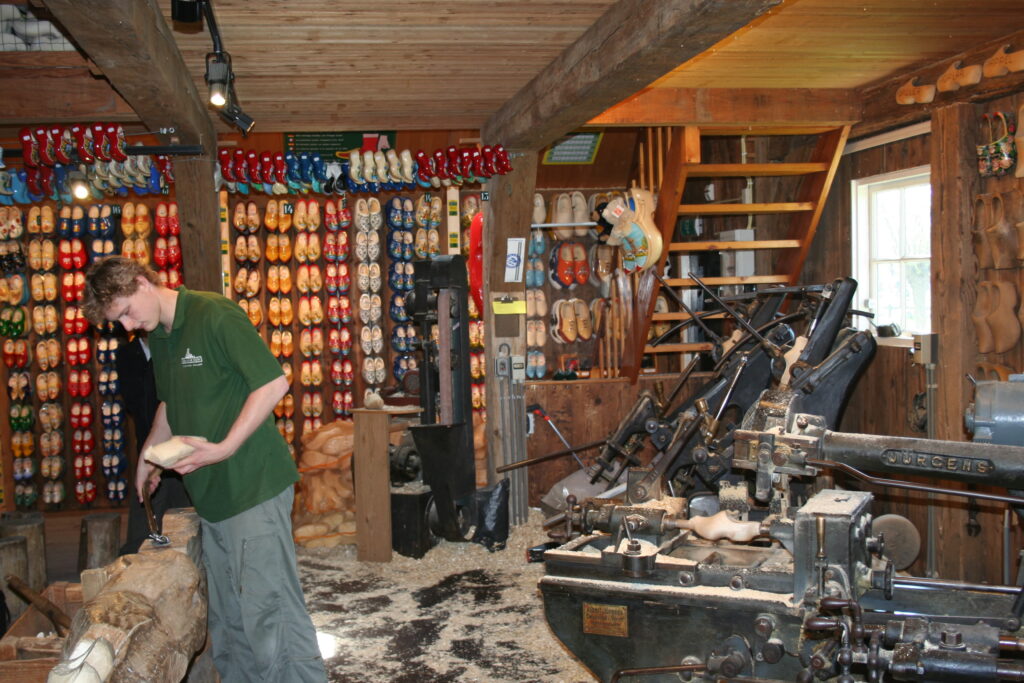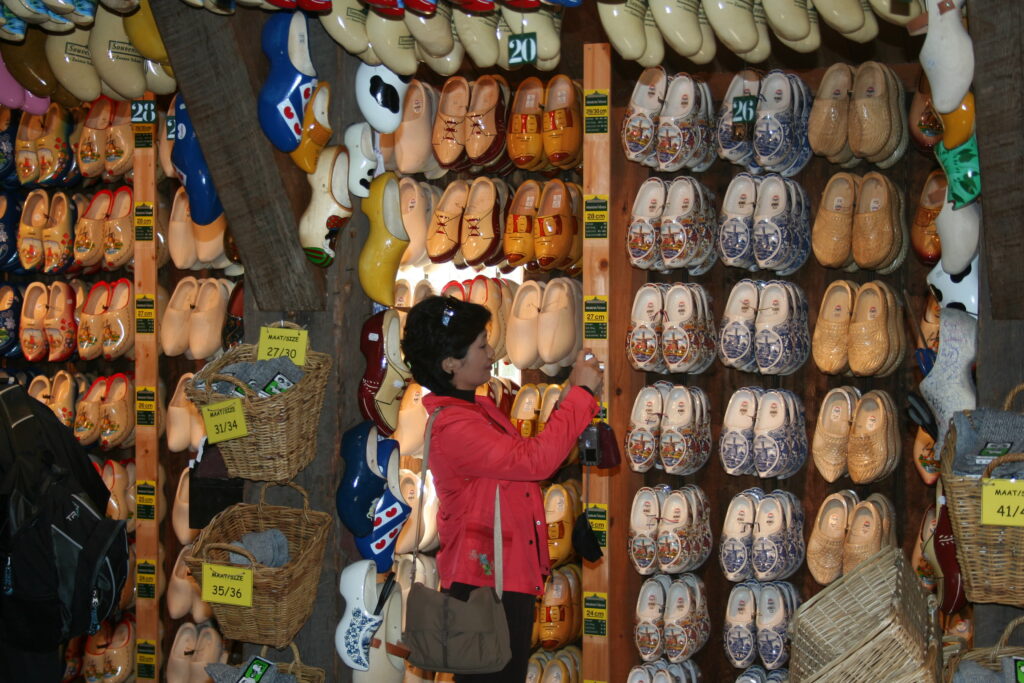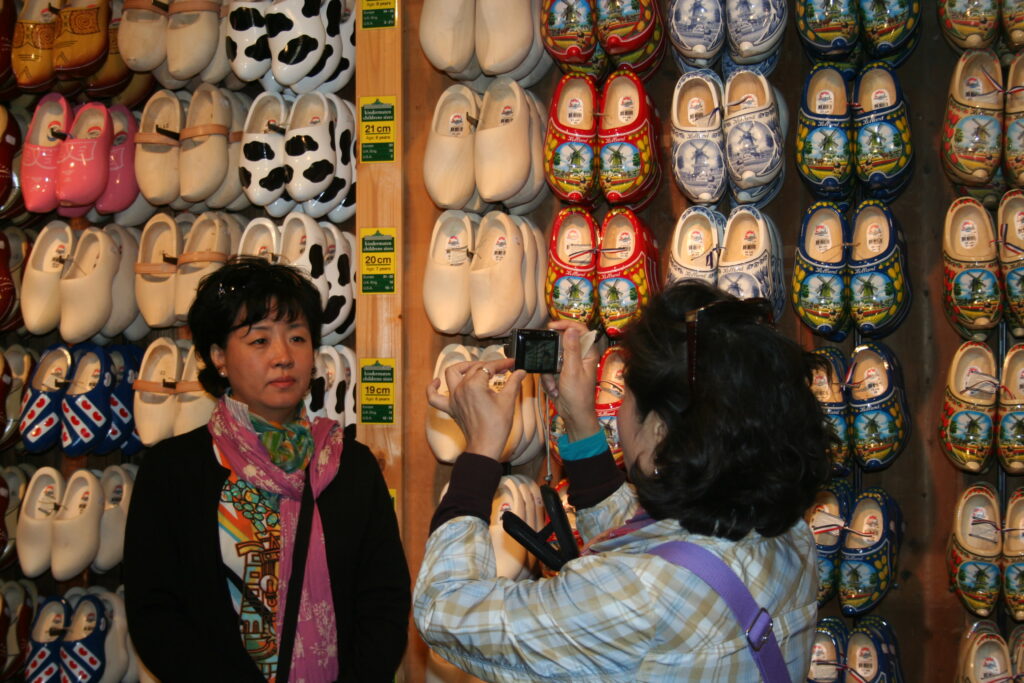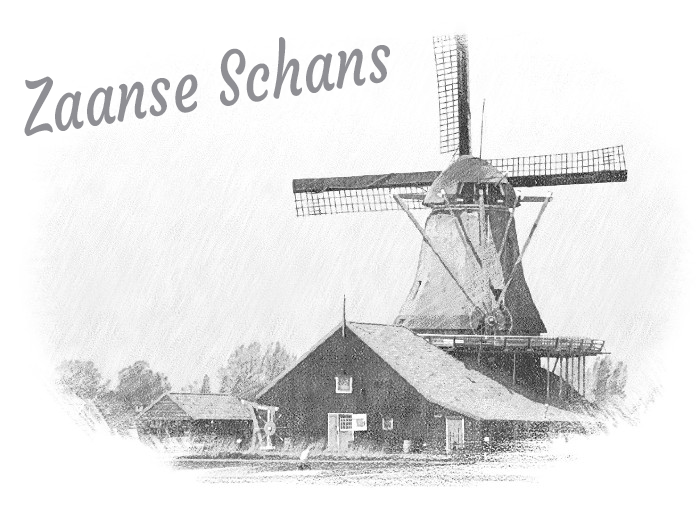
A Glimpse into Dutch Heritage
Nestled just outside Amsterdam, the picturesque village of Zaanse Schans offers a captivating journey through Dutch history and culture. Stepping into this charming open-air museum is like stepping back in time, as it showcases the Netherlands’ rich industrial and rural heritage.
With its iconic windmills, historic houses, and traditional crafts, Zaanse Schans provides visitors with a unique opportunity to experience Dutch life from the 18th and 19th centuries. The windmills, once the backbone of Dutch industry, stand proudly as enduring symbols of innovation and craftsmanship. Visitors can explore the inner workings of these iconic structures, learning about their historical significance in the region’s economy.
Walking along cobbled streets lined with wooden houses, one can’t help but feel transported to a bygone era. Artisans demonstrate traditional crafts like wooden shoe-making, cheese-making, and clog-carving, offering an interactive learning experience that highlights the intricacies of Dutch craftsmanship.
The scenic beauty of Zaanse Schans is not to be overlooked either. The village is situated along the banks of the Zaan River, providing stunning vistas that have inspired artists for centuries.
For history buffs, culture enthusiasts, and curious travelers alike, Zaanse Schans offers an immersive journey into the heart of Dutch identity. It’s a place where tradition comes to life, reminding us of the importance of preserving and celebrating our cultural heritage.
ALBERT HEIJN
The museum shop is located on the Zaanse Schans. Here you can view the first shop (interior) of Albert Heijn and various objects from their rich history are exhibited. There is also an exhibition about Albert Heijn’s rich coffee past.
WINDMILS LIKE EARLIER
Standing on the water of the Zaan from south to north:
Spice mill De Huisman
Wood saw-paltrok mill De Gekroonde Poelenburg
Paint mill De Kat
Oil mill De Zoeker
Wood saw mill Het Jonge Schaap (replica of a former mill from 1680)
Oil mill De Os (mill body with interior)
Seesaw sawmill Het Klaverblad
Oil mill De Bonte Hen

There are several smaller and larger museums on the site:
Zaans Museum
Molenmuseum
Museum Zaanse Tijd
Bakery museum In de Gecroonde Duyvekater
Museum shop Albert Heijn
daily life at zaanse schans
Initially set up as a residential area, the neighborhood attracted more and more tourists for which it was not designed.
From 1963 many old wooden buildings from the Zaan region were brought to the Zaanse Schans expansion plan with low loaders and restored to their former glory. Transport by low-loader was preferred in order to preserve the wooden authenticity of a building as much as possible. Concrete was chosen as the foundation instead of traditional wooden posts with wedges. An additional car park was constructed on the site where a school was originally planned. From 1976 the Zaanse Schans was a fact as a tourist destination. The Zaanse Schans attracts foreign tourists from Amsterdam, and in the spring combined visits with the Keukenhof.
The neighborhood was named in 1961 after the redoubt that Diederik Sonoy, governor in the service of William of Orange, had built in 1574 to stop the Spanish troops.
An important invention preceded the Zaanse heyday. This was the invention of the crankshaft by fellow countryman Cornelis Corneliszoon van Uitgeest in 1594.
The crankshaft made it possible to convert the horizontal wind direction on the windmill blades into a vertical sawing movement. As a result, mills were suddenly able to cut much more wood in an industrial way than was ever possible by hand. Subsequently, the Zaankanters developed various types of industrial mills through all sorts of handy finds, where really everything rolled out. Sawn wood, paper, ground spices, oil for food and paint, dyes, all kinds of fibres, flour, cocoa powder, and much more. Obviously, these developments, especially in the 18th and 19th centuries, a lot of money to the Zaan region The very prosperous 17th century – the Golden Age – was a great catalyst for shipbuilding and for industrial mills in the Zaan region. The location of the region, on the water and close to Amsterdam, was ideal during the Golden Age.
visitors, visitors, visitors.............
clogs and more clogs
The craft of clog making can only be seen at fairs. Where every village in the Netherlands used to have its own clog maker. Nowadays there are only about 10 clog makers in the Netherlands who independently produce and sell clogs.
Almost all clogs are made by machine. Clogs are made from poplar, willow or elm wood. The wood does not have to dry first, but is processed wet during the clog manufacture. The logs are sawn into wide disks, called ‘spheres’, which in turn are sawn into blocks with a block sawing machine, large enough to remove a lump. These blocks are placed in a milling machine, which mills the outer shape from the blocks. To this end, two blocks are clamped side by side between two pins, with a metal model clog in between.






